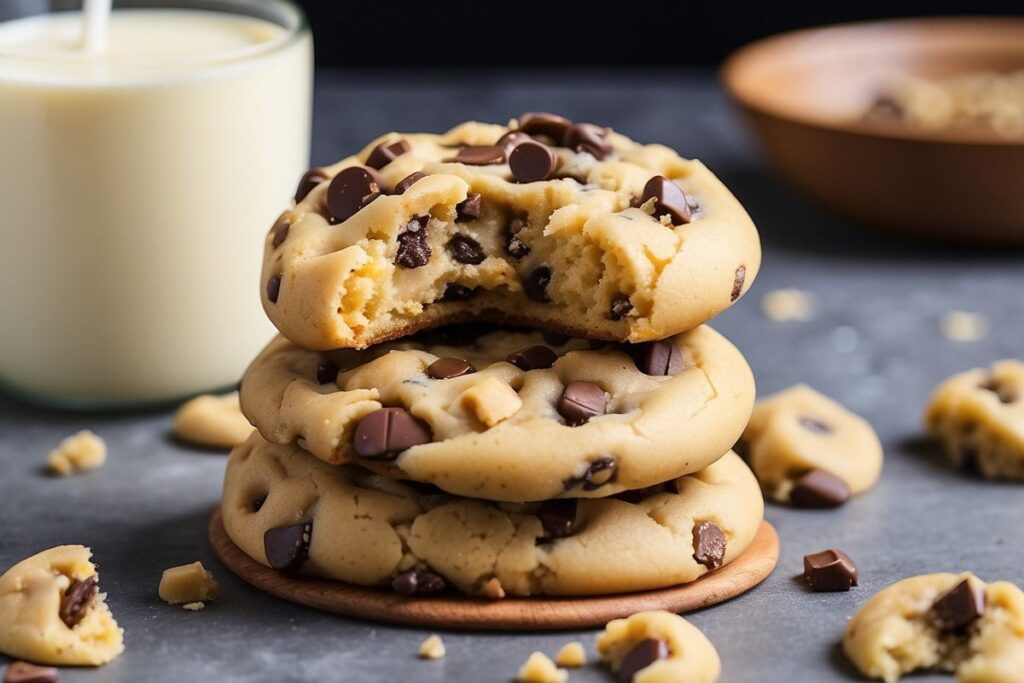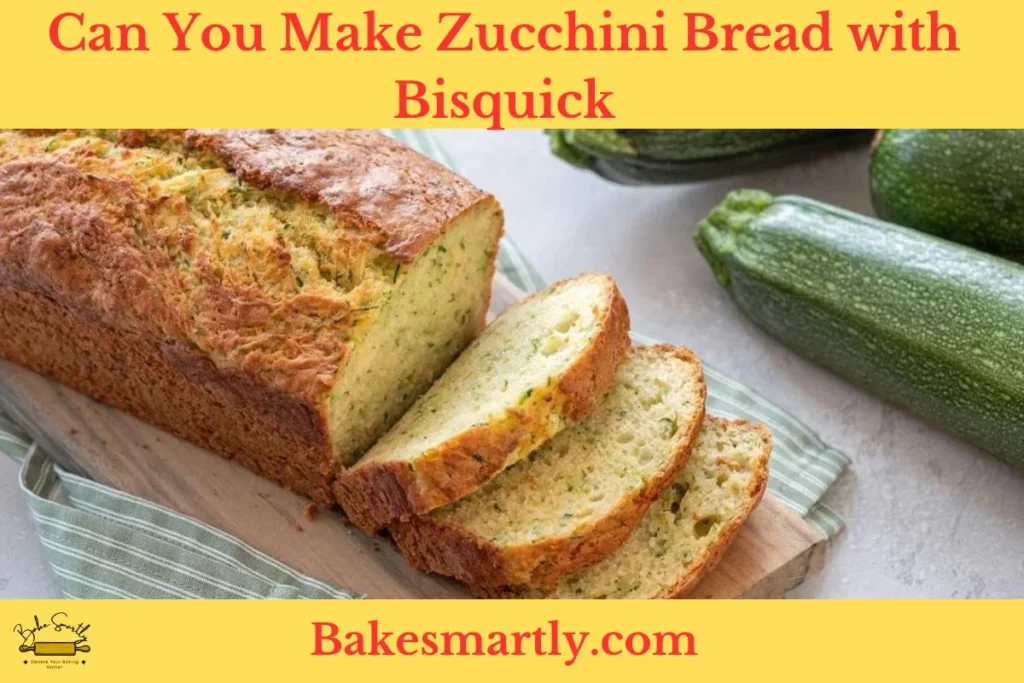
Make Your Cookie Dough Less Sticky with This Guide
Are you tired of struggling with sticky and frustrating cookie dough that just won’t cooperate?
Fear not! In this detailed guide, we’ll explore effective ways to make your cookie dough less sticky. From the main reasons to its fixes, and also some personal tips for the future.
Table of Contents
ToggleWhat Happens If You Bake Sticky Cookie Dough
Baking cookie dough that’s too sticky can mess up your favorite treats. When gooey dough goes in the oven, it can cause a bunch of problems that mess with how your cookies look and taste.
One big issue is that the cookies spread out too much. Because the dough is sticky, it doesn’t keep its shape when it bakes, making the cookies turn out flat and all weird-shaped on the baking sheet. That means you end up with cookies that aren’t as thick and chewy or crispy as you want them to be.
But that’s not the only problem – the stickiness can also make the baking uneven. Parts of the dough with more moisture might take longer to cook, while drier parts could get too crispy.
So, you end up with cookies that are a mix of underbaked and overly crunchy bits. And the texture suffers too because the stickiness messes with getting that perfect chewiness or crispiness you’re after.
On top of all that, dealing with sticky cookie dough can be a real pain when you’re trying to shape the cookies before baking. It gets messy and frustrating, with the dough sticking to your hands, utensils, and everything else.
Baking sticky cookie dough can turn a fun baking time into a bit of a hassle, and the cookies might not come out as tasty and well-formed as you hoped.
To avoid these issues, check out the tips in this guide to make your cookie dough less sticky and ensure your baking adventure ends with perfect, mouthwatering results.

5 Reasons Why Your Cookie Dough is Too Sticky
Baking cookies is a favorite pastime, but dealing with super sticky cookie dough can quickly spoil the fun. If you’ve been struggling with dough that sticks to everything but the right places, don’t worry.
Let’s figure out why your cookie dough is overly sticky and explore five common reasons for this baking challenge.
Flour Issues
One major reason for sticky cookie dough is the type of flour you use. Different flours have different protein levels, affecting the texture of the dough. Choosing high-protein flour can make your dough stickier.
To fix this, go for flour with lower protein content, like cake flour or pastry flour. These types result in a lighter and less sticky dough, making your baking experience much easier.
Sugar Overload
While sugar adds sweetness, it also affects the texture of your cookie dough. Too much sugar can make it sticky. Find the right balance by carefully measuring and adjusting sugar amounts in your recipe.
This not only impacts the sweetness of your cookies but also ensures a dough that’s easy to handle and shape.
Too Much Fat, Too Early
Fats add richness and flavor to your cookies, but too much can make your dough too sticky. Overloading with fats, like butter or oil, can lead to uncooperative dough.
Stick to your recipe, measure fats accurately, and consider trying slightly less for dough that’s both tasty and easy to work with.
Warm Ingredients, Sticky Results
Temperature matters in baking, and using warm ingredients can make your cookie dough sticky. Make sure your butter, eggs, and other perishables are at the right temperature.
Warmer ingredients can cause the fats in the dough to soften too quickly, resulting in stickiness. Stay cool in the kitchen, both literally and figuratively, for a more enjoyable baking experience.
Overmixing Trouble
In the quest for perfectly mixed dough, overmixing can be a problem. While mixing is important, too much stirring can lead to overly developed gluten, making the dough sticky.
Take a gentle approach, mixing just until the ingredients are combined. This prevents stickiness and ensures a tender and delightful cookie texture.

How To Fix Sticky Cookie Dough in 4 Easy Ways
Dealing with sticky cookie dough can be tricky, but don’t worry—there are easy ways to tackle this common baking issue. In this guide, we’ll check out four simple methods to turn your sticky cookie dough into a smooth and enjoyable baking experience.
Adjusting Flour Amounts
One main reason for sticky cookie dough is an imbalance in flour. To fix it, try tweaking the amount and type of flour. If your dough is too sticky, add more flour gradually until it gets the right consistency.
Just be careful not to overdo it, as too much flour can change the texture of your cookies. Experiment with different flours or use a low-protein flour to reduce stickiness while keeping a soft and chewy texture.
Chilling and Resting the Dough
Chilling the cookie dough makes a big difference in reducing stickiness. Put the dough in the fridge for at least an hour to firm it up. If you have time, chilling it overnight works even better.
This process solidifies the fats in the dough, making it easier to handle and less likely to stick. Letting the dough rest also allows the ingredients to blend, enhancing both flavor and texture. Well-rested dough is less likely to be too sticky and produces better baking results.
Adding Dry Ingredients Gradually
How you add dry ingredients can greatly affect the stickiness of your cookie dough. To fix overly sticky dough, add dry ingredients slowly. This prevents clumps and ensures an even mix.
Start by adding small amounts of flour, sugar, and other dry ingredients, making sure each addition blends in before adding more. This step-by-step approach reduces the risk of ending up with sticky and uneven dough.
Flouring Hands and Surfaces
Getting hands-on with cookie-making is fun, but it can lead to sticky situations. To fix this, generously flour your hands and surfaces. Before touching the dough, coat your hands with flour to create a barrier.
Also, lightly flour the rolling pin, countertop, and any other surfaces where the dough might stick. This simple but effective step makes the whole process easier and minimizes the frustration of dealing with sticky cookie dough.

Tips for Preventing Sticky Dough in the Future
As someone who loves baking, I’ve faced my fair share of challenges with sticky dough. Dealing with gooey messes on my hands can be quite frustrating. But over time, I’ve picked up five valuable tips to avoid sticky dough headaches in the future.
- First off, the key is getting the right amount of flour. Too much or too little can mess up the delicate balance of ingredients, resulting in a dough that just won’t cooperate. Invest in a good kitchen scale to measure your flour accurately and give your dough the precise foundation it needs.
- Controlling the temperature is also crucial for consistent dough. If your kitchen is too warm, the dough might get too sticky. On the flip side, a chilly environment can slow down yeast activation. Finding that sweet spot – a comfortably warm setting – can make all the difference. I’ve found that letting ingredients come to room temperature before mixing helps create a smooth blend and reduces stickiness.
- Patience is key, especially in baking. Rushing through the process can mean skipping crucial steps. Giving your dough enough time to rise and rest not only improves its texture but also reduces its tendency to stick. It’s a lesson in mindfulness – understanding that good things come to those who wait.
- The type of flour you use matters too. Choose bread flour over all-purpose flour for recipes that need structure and elasticity. Bread flour has more protein, giving the dough the strength it needs to avoid stickiness and form well.
How to Make Cookie Dough Less Sticky without Flour
If you want your cookie dough to be less sticky without adding extra flour, there are some easy tricks to keep the texture and flavor you want. First, pop the dough in the fridge for about 30 minutes to firm up the butter and make it less gooey.
Another way is to throw in more dry stuff like oats or ground nuts to soak up extra moisture and give it a firmer feel. You can also try coating your hands and tools with a bit of oil before handling the dough to cut down on stickiness.
And hey, if you break the dough into smaller chunks and roll them one by one, it’s way easier to handle. Give these tricks a shot, and you’ll have cookie dough that’s not too sticky but still tastes amazing!
Frequently Asked Questions (FAQS)
How do you fix cookie dough that is too wet?
To fix overly wet cookie dough, gradually add more dry ingredients like flour until the desired consistency is reached. Take it slow, adjusting as needed, to prevent overcompensating and ending up with dry dough.
How do you firm up cookie dough?
To firm up cookie dough, refrigerate it for an extended period. Chilling allows fats to solidify, resulting in firmer dough. Aim for a few hours or overnight for optimal results, enhancing the texture and manageability of the dough.
What can I add to dough that is too sticky?
Combat sticky dough by incorporating alternative dry ingredients like cornstarch or arrowroot powder. These absorb excess moisture, reducing stickiness. Adjusting the sugar and fat ratio also contributes to achieving a less sticky consistency without relying on traditional flour.
Why is my cookie-press dough too sticky?
If your cookie press dough is too sticky, consider adding a bit more flour gradually until it reaches the right consistency. Ensure your ingredients are well-balanced, and, if needed, chill the dough before using the cookie press to improve its manageability during the shaping process.
Final Thoughts
In the wonderful world of baking, tackling sticky cookie dough issues makes your baking adventure more satisfying and fun. Dealing with gooey dough isn’t just about getting the perfect cookie; it’s about making your entire baking experience better.
This guide helps you figure out why your dough is sticky and gives you practical solutions to save your cookies from being too gooey.
Keep in mind that being precise with your ingredient measurements, handling the dough carefully, and adding a bit of patience are the key ingredients for a smooth baking journey.
Lindsey Mackenzie
About me
Hi there! I’m Lindsey Mackenzie, the founder of Bake Smartly. Baking has been my passion since childhood, growing up in my father’s bakery. With Bake Smartly, I’m excited to share my love for all things sweet and savory. Join me on this delicious journey as we whip up scrumptious treats and sprinkle joy into every bite!






